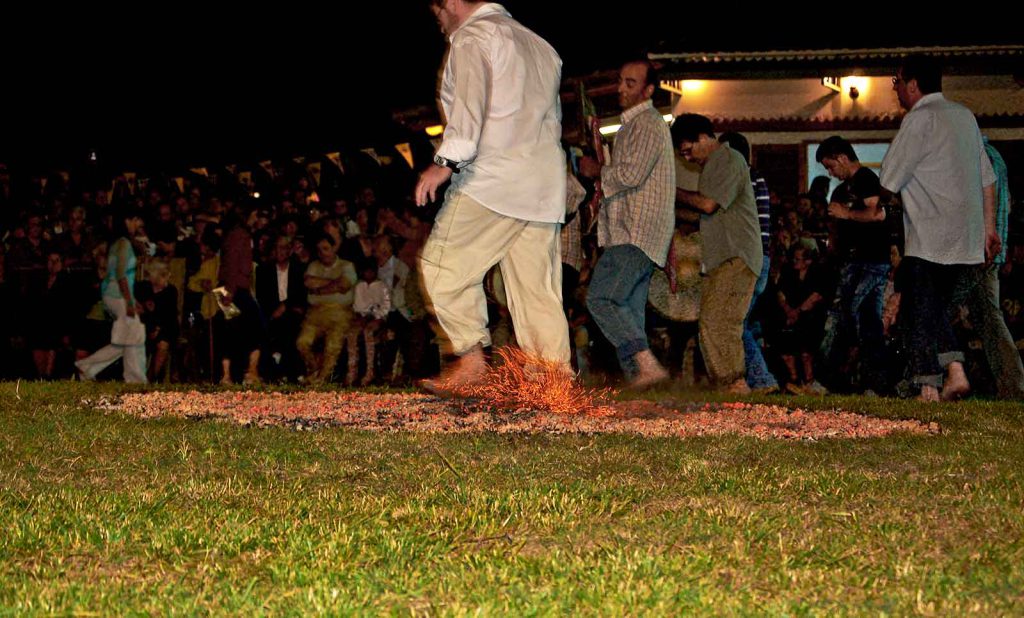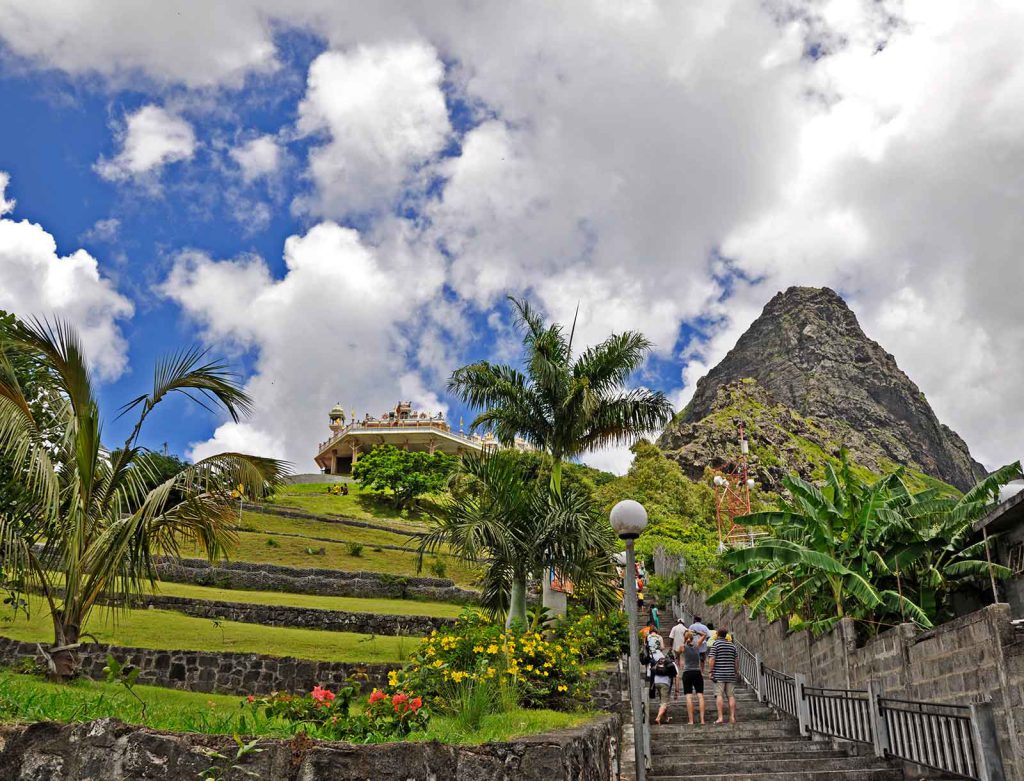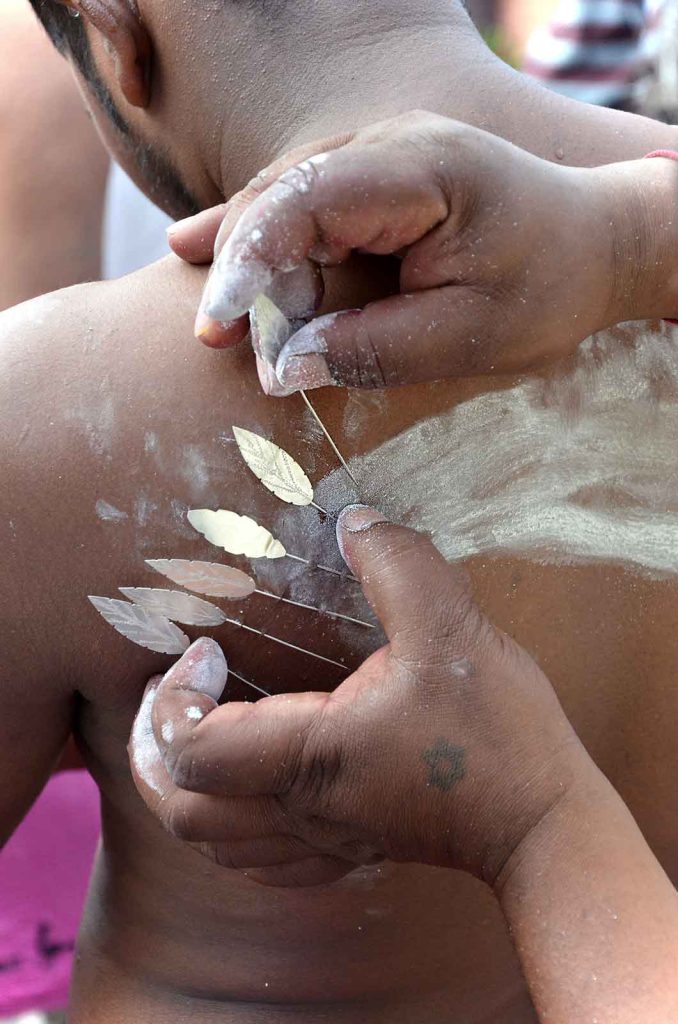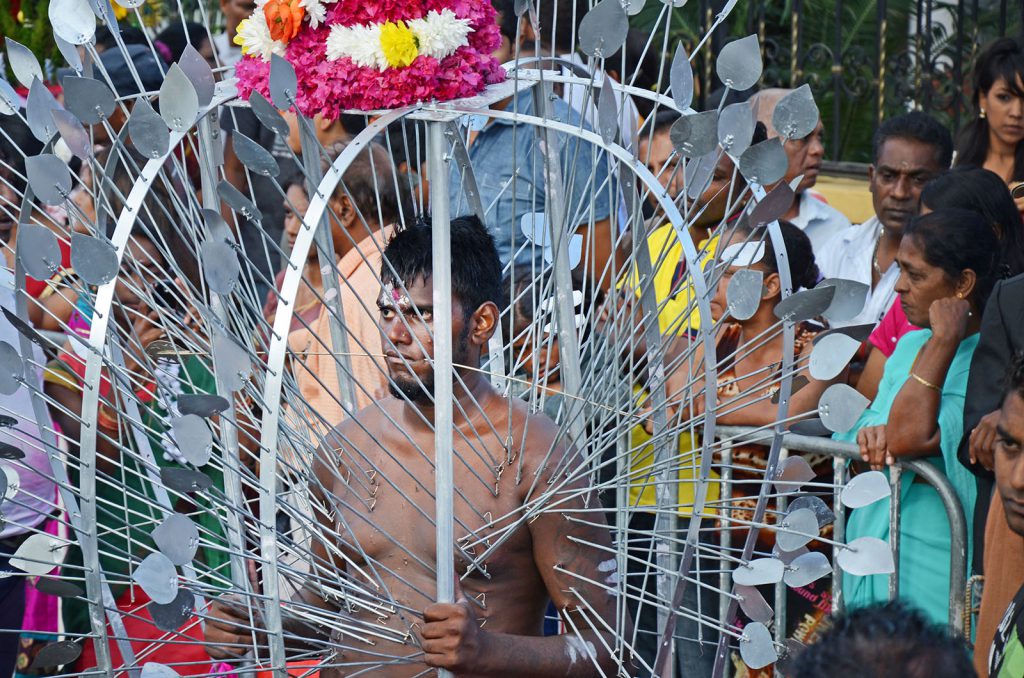How Rituals of Pain Help Heal
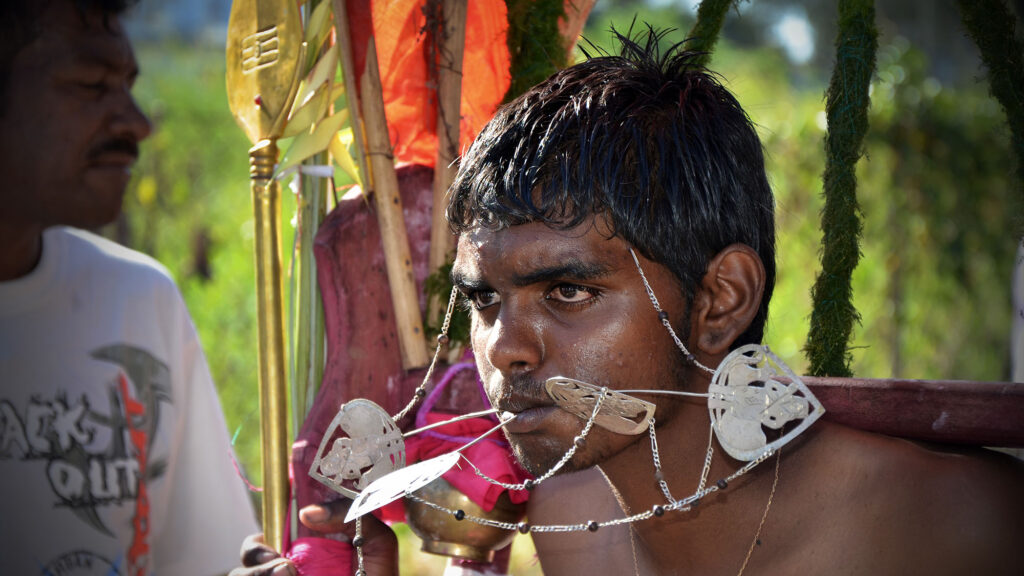
Inside a stuffy, overcrowded, and overheated room, a group of 40 people are dancing, sweating and breathing heavily, moaning and crying. They have been dancing nonstop for the better part of three days, carrying heavy icons of their saints. Occasionally they collapse on the floor, only to resume dancing after regaining their senses. At the culmination of the ceremony, devotees exit the room barefooted to continue their dance over a pile of glowing hot embers.
I first saw a scene like this back in 2005, when I traveled to northern Greece to conduct my first fieldwork for my doctorate in anthropology. In five different villages, groups of Orthodox Christians called the Anastenaria hold this annual festival in honor of Saints Constantine and Helen. The Anastenaria describe this experience using words like strain, struggle, and suffering. But at the same time, they often describe it as a process of fulfillment, and even healing.
One elderly woman, for example, told me the story of how becoming a fire-walker changed her life. She had been suffering from depression, and for years she couldn’t even find the will to get out of her home. Desperate to find a cure, her husband called the Anastenaria, who embraced the woman and invited her to participate in their rituals. After days of dancing and eventually fire-walking, she felt better. Little by little, her mental health started improving, she told me, until she no longer felt depressed.
The Anastenaria are not alone. Despite great risks, similar rituals are performed by millions of people around the globe. The harms involved in those rituals range from prolonged exhaustion to burning, scarring, piercing, and other forms of bodily mutilation. In many societies, these activities are rites of passage that mark a transition to adulthood or group membership, and failure to participate may bring humiliation, social exclusion, or worse. But often such activities are undertaken voluntarily.
Paradoxically, despite exposing practitioners to the risk of trauma, scarring, and infection, such practices are often culturally prescribed remedies for a variety of ailments. For example, the Sun Dance ceremony practiced by many Native American tribes, which involves piercing or ripping the flesh, is considered to have healing powers. In Mexico, devotees of Santa Muerte crawl in the dirt on their hands and knees over long distances to implore the deity to cure them of infertility and other problems. And in some parts of Africa and the Middle East, participants in the Zār ceremony dance to exhaustion to overcome conditions that are attributed to spirit possession, such as depression and anxiety disorders.
Is there any reason to believe these prescriptions work? After all, the numerous rituals that are meant to bring rain, make crops grow, or harm one’s enemies have never been shown to have any efficacy. On the other hand, anthropologists have long observed that some rituals may have tangible—albeit more indirect—effects, such as increasing bonding and promoting prosocial behaviors. These effects can be studied and measured.
We found that those who suffered the most got the greatest benefits.
So, what are the effects of extreme rituals on psycho-physiological health?
I started to study this in earnest in 2013, when I met Sammyh Khan, a social psychologist at Keele University, in England, who was intrigued by the same question. After chatting and meeting with other experts, we eventually managed to get a grant that allowed us to buy health monitoring equipment and assemble an interdisciplinary team of researchers to study the effects of extreme ritual practices in a real-life setting. The results of that collaboration were recently published in an article in the October issue of the journal Current Anthropology.
We decided to tackle this question in Mauritius, a small tropical island in the Indian Ocean where I have been doing fieldwork over the past decade. Mauritius is a multicultural society, and its various ethnic groups practice a wide range of religions and perform a great variety of rituals. This diversity is fascinating for any anthropologist, but above all what brought me to Mauritius were some of the ritual practices of the local Tamil community. The most extraordinary of these practices is a massive pilgrimage called the kavadi attam, which is Tamil for “burden dance.”
This pilgrimage is the culmination of a 10-day festival during which devotees prepare large portable shrines (the kavadi) that they carry on their shoulders on a several-hour-long procession to the temple of Lord Murugan, the Hindu god of war. Before they start carrying their burden, they have their bodies pierced with sharp metallic objects, including needles, hooks, and skewers. Some have only a few piercings through the tongue and face, while others endure several hundred throughout their entire body. The largest of these piercings are rods as thick as broomsticks that are impaled through both cheeks. In addition, some have hooks pierced through their back that are attached to ropes used to pull colorful chariots the size of minivans.
With all these piercings in their bodies and the kavadi on their shoulders, devotees walk for the better part of the day under the tropical sun until they reach the temple. This walk is done either barefooted on the scorching asphalt or in shoes made of upright nails. When they finally reach their destination, the pilgrims must carry their heavy burden (often weighting over 100 pounds) up 242 steps to where the temple is located. This remarkable tradition is performed by millions of Hindus around the world each year, including in Mauritius.
Our goal was to examine the effects of this ordeal on participants’ physical and psychological well-being without disturbing the ritual. Over the course of two months, we used a multitude of measures to compare a group of ritual participants with a sample from the same community who did not practice the kavadi ritual. A wearable health monitor—a lightweight armband the size of a wristwatch—allowed us to measure stress levels, physical activity, body temperature, and sleep quality. In weekly home visits, we collected demographic information such as socioeconomic status and administered surveys designed to assess people’s own evaluations of their health and well-being.
When we analyzed the data, we found that those who suffered from chronic illness and social marginalization prior to the ritual were more likely to engage in more extreme forms of the ceremony—for example, they endured more piercings. In turn, we found that those who suffered the most got the greatest benefits.
Our measures confirmed that participation in the kavadi ritual is extremely stressful. Participants’ electrodermal activity (the amount of electrical conductance in the skin, which reflects changes in the autonomic nervous system and is a common measure of stress) on the day of the ritual was far higher compared to any other day.
But just a few days later, there were no detectable negative effects of this torment on their physiology. On the contrary, a few weeks later we noted significant increases in practitioners’ subjective evaluations of their well-being and quality of life, compared to those who had not participated.
The more someone suffered during the ritual (measured by physiological stress and the number of piercings endured), the greater their perceived increase in their psychological health. The half of the group with the most piercings, for example, with dozens to hundreds of piercings each, rated themselves 30 percent higher on psychological health when compared to the half of the group that had only one or two piercings each.
In one sense, these results are surprising because our society is used to seeing physical suffering as something intrinsically negative. The kavadi ritual involves activities that pose direct threats to participants’ health: The numerous piercings expose them to the risk of bleeding and infection; the long procession under the tropical sun can cause severe sunburn, dehydration, and exhaustion; and walking barefooted on the scorching asphalt may lead to burns and other injuries. Throughout the day, devotees seem to be in extreme distress, and their physiology supports that.
This does not seem to be a beneficial condition for anyone’s health.
But in another sense, these results are also expected. People derive meaning and purpose from suffering, which is why they engage in marathons, mountain climbing, or ice swimming. And just like those activities, extreme rituals can have exhilarating effects by triggering the release of endogenous opioids (natural chemicals produced by our bodies that provide a sense of euphoria). Those chemicals and other physiological responses to extreme exertion are responsible for the experience, often reported by marathon runners, known as the runner’s high. Studies show that such effects are amplified when people engage in these activities as part of a large group rather than alone.
Religious rituals in particular have additional important effects at the social level. Unlike a marathon, where people typically assemble only for the duration of the event, participation in religious rituals acts as a reminder of ongoing membership in a permanent community of individuals who share the same interests, values, and experiences. Thus, the cost undertaken by the practitioners becomes a signal of their commitment to the group. This helps to increase their status within that community and to build a social support network.
These two distinct effects—one related to the physical experience of performance and the other to the social feedback received from the community—can be very powerful when combined. By contributing to the well-being of their practitioners, these rituals seem to help people cope with other stressful events, like chronic illness, in their lives.
This is not to say that these rituals can substitute for biomedical interventions—and most practitioners would not claim that either. But in many contexts, especially ones where medical interventions are not widely available or may be accompanied by social stigma—such as mental illness, for example—rituals may play significant complementary roles that make them invaluable tools for resilience and coping.
Scholars often define ritual as a cultural practice that lacks any direct causal relationship to its purported outcomes. But that is not to say that it lacks a function altogether. Traditional practices like the kavadi ritual have been around for thousands of years, which means that they have gone through a process of cultural selection and have successfully survived. This suggests that outsiders should not be too quick to dismiss the possibility that they have something important to offer to the millions of people who engage in them.
For some, even the most horrific of painful ceremonies can bring comfort, support, and even healing.
































